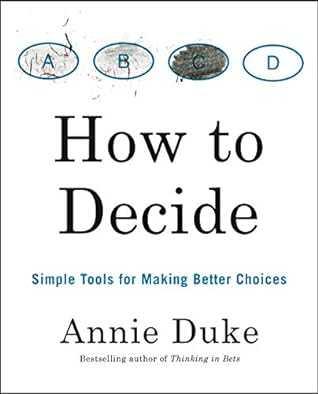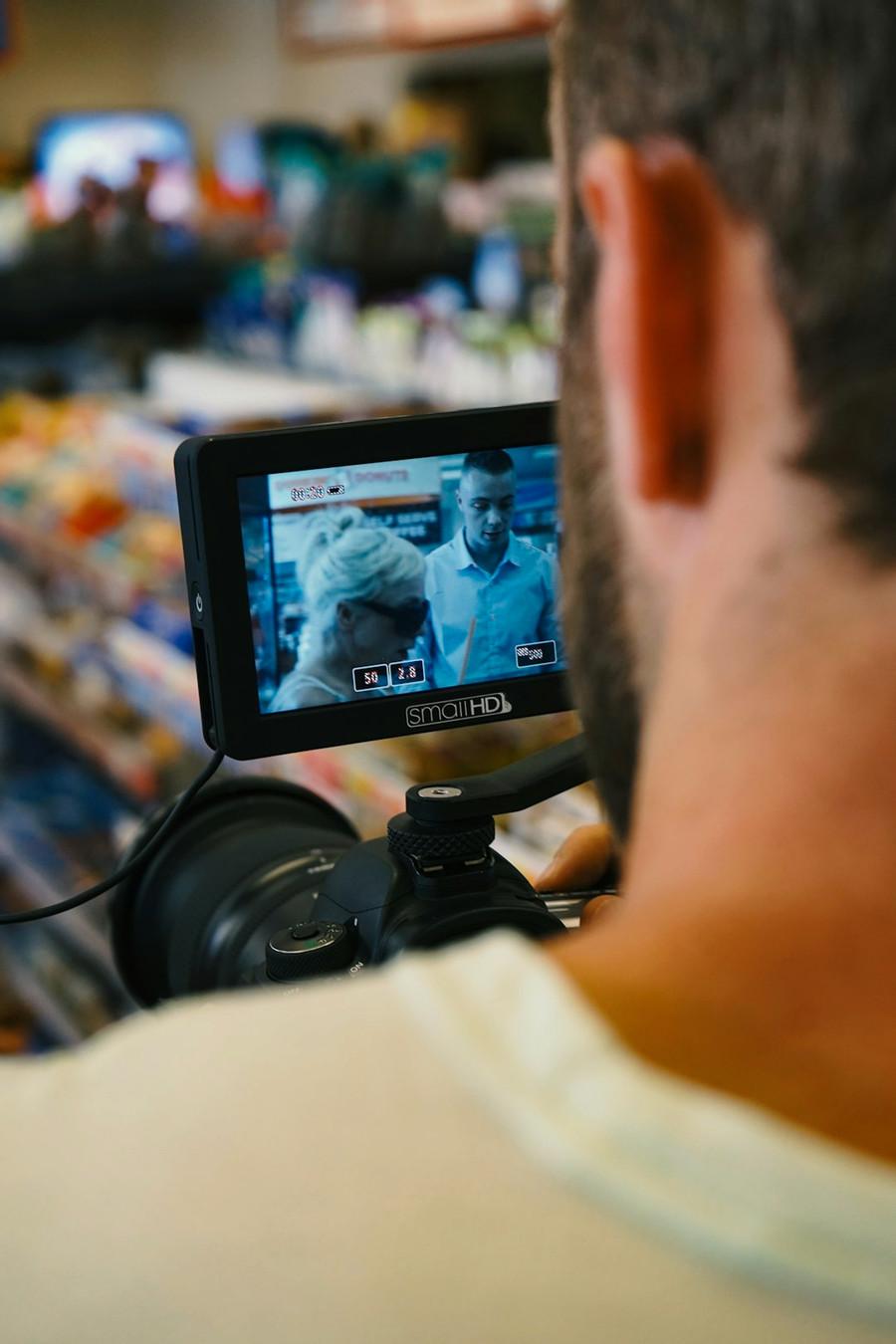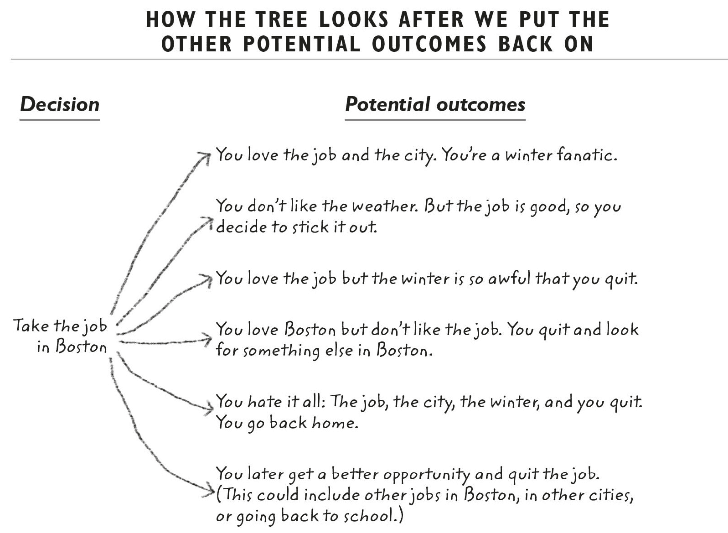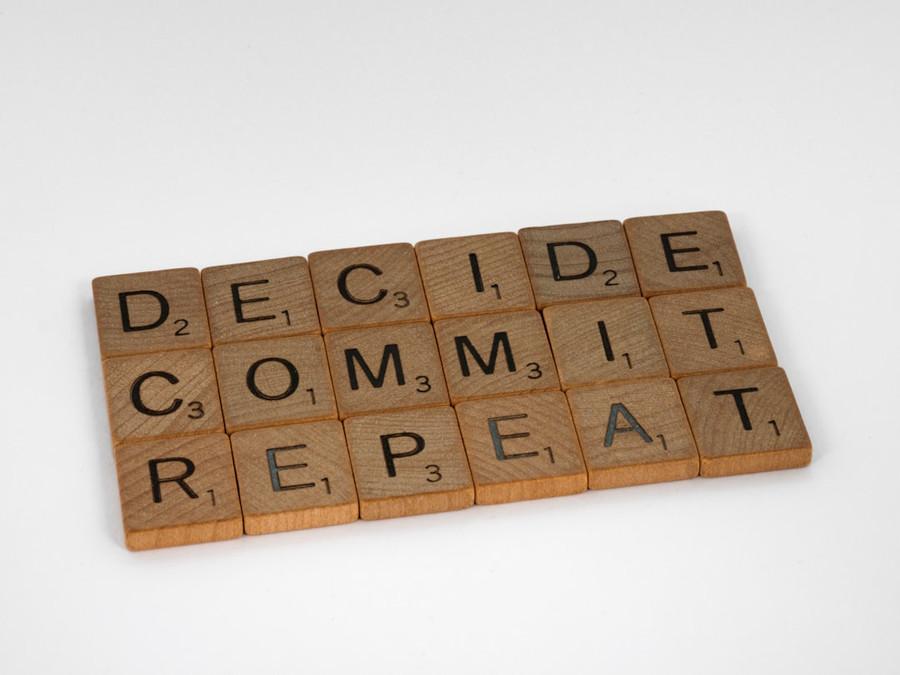Camille A.'s Key Ideas from How to Decide
by Annie Duke
Ideas, facts & insights covering these topics:
24 ideas
·60.8K reads
397
7
Explore the World's Best Ideas
Join today and uncover 100+ curated journeys from 50+ topics. Unlock access to our mobile app with extensive features.
Why You Should Care About Making Better Decisions
Two things determine how life turns out – luck and the quality of your decisions. You can’t affect luck, but you can affect the quality of your decisions. By improving the quality of the decisions, you increase the odds of good things happening to you.
The future is inherently uncertain, so good decisions cannot guarantee outcomes. They just make good outcomes more likely.
695
10.4K reads
Assessing the Quality of Past Decisions: Outcome Bias
People generally find it hard to distinguish a good quality decision from a decision that turned out well. Instead of assessing the decision-making process, they just tend to look at the result of the decision.
Psychologists call this “outcome bias”.
The idea that the result of a decision tells you something about the quality of a decision is extremely powerful (but wrong). You can give someone the same exact facts describing a decision but their view of whether the decision is good or bad will usually change depending on how the decision turns out.
667
6.47K reads
The Paradox Of Experience
In the case of any single decision, good quality decisions can still turn out bad and a bad quality decision can still turn out good. This is due to the role that luck plays. In the long run, however, higher quality decisions are more likely to lead to better outcomes.
The paradox of experience is the idea that experience is necessary for learning, but individual experiences often interfere with learning. This is because of various cognitive biases that hinder our ability to view decisions accurately.
641
5.42K reads
Biases: Motivated Reasoning
Most people are likely to blame bad luck for a bad outcome and credit skill for a good outcome. This is motivated reasoning. Motivated reasoning is the tendency to process information to get to the conclusion we want (rather than the truth). Motivated reasoning might be comforting, but it hinders your ability to learn from your experiences and make better decisions. In the long run, it’s better to be accurate in how you perceive the world, so that you can make better decisions.
655
4.52K reads
Hindsight Bias
Hindsight bias is the tendency to believe that the way something turned out was inevitable or at least predictable. A common example is when people say “I should have known”, “I can’t believe I didn’t see that coming”, or “I told you so (especially if they didn’t)”. Hindsight bias can distort your memory of what you knew at the time you made the decision.
Resulting and hindsight bias can also make you less compassionate. It can make you more likely to blame people for bad outcomes even when the bad outcome wasn’t their fault.
640
3.64K reads
Common Cognitive Biases
Confirmation bias – The tendency to notice and seek out information that confirms our existing beliefs.
Disconfirmation bias – The tendency to be more critical of information that contradicts our existing beliefs.
Overconfidence – overestimating our own skills, intellect or talent.
Availability bias – overestimating the frequency or likelihood of events that are easily available (e.g. more vivid events are easier to recall, so are more available).
Recency bias – believing that recent events are more likely to occur than they actually are.
664
3.47K reads
Handling Biases: Make A Decision Tree
A decision tree is a useful tool for evaluating past decisions and improving the quality of new ones.
Before a decision, the different potential outcomes of that decision are like the many different branches of a decision tree. There are many possible futures but only one past. Once the outcome of a decision is known, resulting(outcome bias) and hindsight bias causes us to mentally “chop off” branches that never happened.
You should consider the counterfactuals – i.e. the outcomes that could have happened but didn’t. The counterfactuals will put the actual outcome into context.
681
3.16K reads
Steps to Make Better Decisions: Identify the Reasonable Set of Possible Outcomes
“Reasonable” is the key word here. You don’t have to try and account for every possibility. Some outcomes are so unlikely it’s not useful to include them in your decision process.
These outcomes can be general scenarios or more focused on particular aspects that you care about. For example, if you’re hiring an employee and the most important thing to you is staff turnover, your possible outcomes could be whether they will leave in < 6 months, between 6-12 months, between 1-2 years, etc.
631
2.41K reads
Identify Your Preference Using the Payoff for Each Outcome
To what degree do you like or dislike each outcome, given your values?
This is a personal question that can vary between individuals. The simplest way to do this is to list potential outcomes on the tree in order from most preferred to least.
You should also think about the magnitude or size of each preference – i.e. how good or how bad is each outcome? If you don’t consider the size of the payoffs, you can’t figure out if going for a potential upside worth risking the potential downside. Size is easy to measure when the payoff is in money, but can be trickier if it’s in something else.
623
1.83K reads
Estimate the Likelihood of Each Outcome Unfolding
It’s important to make an estimate, even if you’re unsure
Most people are uncomfortable estimating the likelihood of something happening in the future because they don’t like being wrong. Since you don’t have perfect information, you can’t give an objectively perfect answer.
Thinking there is only “right” and “wrong”, with nothing in between, is one of the biggest obstacles to good decision-making. You almost always know something that is relevant to assessing the probability, and something is better than nothing.
624
1.64K reads
Use an Explicit Probability Rather than An Ambiguous Term
One way to make higher quality decisions is to get more information – often from other people. If you’re using these ambiguous terms with other people, it’s harder to uncover disagreement (and disagreement can help you get relevant information).
Precision uncovers disagreement. For example, say you think something has around a 30% chance of happening, and your friend thinks it has a 70% chance. If you tell them you think it has a 30% chance of happening, your disagreement is revealed immediately.
621
1.58K reads
Use A Range
Once you’ve made an estimate of the likelihood of each outcome, it’s important to be clear about how uncertain your estimate is. A good way to do this is to offer a range alongside your estimate.
The purpose of a range is to signal, to yourself and to others, how uncertain you are of your guess. By expressing your uncertainty, you are implicitly inviting others to offer up information that can help improve your estimate.
612
1.41K reads
Combine the Inside View and The Outside View
- The inside view is the view of the world from inside of your own perspective, experiences and beliefs. When you make a decision based on your intuition or gut feel, that is taking the inside view.
- In contrast, the outside view is what is actually true of the world, independent of your own perspective. It’s how someone else would view your situation.
- You should combine the outside view with the inside view. The inside view may have information to suggest that your chances are better or worse than average. But the outside view is a useful reality check.
626
1.24K reads
The Problem With Being Too Smart
- Smart people are better at motivated reasoning – they are more able to interpret information to confirm their prior beliefs.
- Smart people are better at constructing arguments that support their views, and convincing people around them.
- Smart people also tend to have more confidence in their intuition or gut. Because of that overconfidence, smart people are less likely to seek feedback.
630
1.79K reads
Assess the Relative Likelihood of Outcomes You Like and Dislike for The Option Under Consideration
Once you’ve combined probabilities with your preferences for each payoff/outcome, you will be able to evaluate and compare options more clearly.
Consider the other options objectively.
Compare the options to one another but do not rely on a pros and cons list.
A pros and cons list is not really designed as a tool to help you compare choices, but rather as a tool to help you evaluate a single choice.
611
1.3K reads
Getting Feedback
Beliefs are contagious. If you tell others what you think when asking for feedback, their feedback is likely to mirror your own views. Keeping your views to yourself makes people more likely to tell you what they really think.
Outcomes are also contagious. If you tell people what happened when asking for feedback, it can ruin their feedback because it makes outcome bias likely. You’ll get better feedback if you tell them only as much information as you had at the time you made your decision.
624
1.2K reads
Checklists for Getting Feedback
Make a checklist of details that someone would need to know in order to give you high-quality feedback and then give them those details. This is particularly useful for repeating decisions because you can think about it before considering an individual instance of a decision.
It’s important to agree that people participating in the feedback process are accountable to the checklist. Otherwise, someone might assume that if details are emphasised, it’s because they’re important, or if detail is missing, it’s because it’s unimportant.
607
1.05K reads
Optimizing Decisions: The Time And Accuracy Tradeoff
Time is a limited resource. Therefore it is important to be able to distinguish when which decisions are worth spending more time on, and which ones are not.
There is a trade-off between time and accuracy. Increasing the accuracy of a decision costs time, but saving time costs accuracy.
Low impact decisions are a good opportunity to take risks and “poke at the world”, which can help you learn about the world and your own preferences.
620
1.06K reads
Future Happiness: A Key Metric In Making Decisions
Happiness is a good proxy for understanding the impact of a decision on achieving long-term goals.
The test involves asking yourself if the outcome of the decision will likely have a significant effect on your happiness in a year, month or week. The shorter the time period for which your answer is “no”, the quicker you can make that decision (sacrificing accuracy).
619
1.11K reads
Freerolls
Freerolling describes a situation where there is an asymmetry between the upside and downside because the potential losses are insignificant. The limited downside means there is not much to lose – but potentially much to gain.
Once you identify a freeroll opportunity, you don’t need to think much about whether to take that opportunity, but you may still want to take time with executing the decision.
617
1.18K reads
Close Decisions
Sometimes we have trouble deciding between two options that seem very close to each other in quality. These decisions are “sheep in wolf’s clothing”.
Even if such decisions are high impact, the closeness is a signal that you can make the decision faster and worry less about accuracy. After all, the payoffs are similar. Reframe the decision by asking, “Whichever option I choose, how wrong can I be?”
We live in a world of imperfect information so, when two options are very close in quality, it’s unlikely that you can work out which option is better even by taking more time.
620
1.04K reads
Quitting
When you make a decision, you’re doing it with limited information. As things unfold, you may get new information. That new information reveals that another option is better.
There are, of course, costs to quitting. Part of a good decision-making process involves factoring in the costs of quitting. The lower the cost of quitting, the faster you can make decisions because it makes it easier to change course partway through as you get more information. When the cost of quitting is low, that can also be an opportunity to experiment and learn more about the world or your own preferences.
613
1.03K reads
Decision Making: Maximising Vs Satisficing
Maximising is trying to make the “optimal” decision. It involves examining every possible option and trying to make the perfect choice. Most people have maximising tendencies, but there’s no such thing as a “perfect” decision when information is imperfect.
Satisficing is when you just choose the first satisfactory option available. The term is made up by combining the words “satisfy” and “suffice”.
620
1.24K reads
How To Use Negative Thinking
- Negative thinking is important. Not so much thinking “I am going to fail”, but thinking “If I were to fail, how might that happen?” Imagining how you might fail doesn’t make failure more likely.
- In fact, it's been shown that mental contrasting, where you imagine what you want to accomplish and confront the obstacles to achieving it, can help you achieve your goals.
633
1.56K reads
IDEAS CURATED BY
Camille A.'s ideas are part of this journey:
Learn more about leadershipandmanagement with this collection
Proper running form
Tips for staying motivated
Importance of rest and recovery
Related collections
Discover Key Ideas from Books on Similar Topics
20 ideas
Thinking in Bets
Annie Duke
15 ideas
One Decision Summary
fourminutebooks.com
7 ideas
Exhausted by Options - Nat Eliason
nateliason.com
Read & Learn
20x Faster
without
deepstash
with
deepstash
with
deepstash
Personalized microlearning
—
100+ Learning Journeys
—
Access to 200,000+ ideas
—
Access to the mobile app
—
Unlimited idea saving
—
—
Unlimited history
—
—
Unlimited listening to ideas
—
—
Downloading & offline access
—
—
Supercharge your mind with one idea per day
Enter your email and spend 1 minute every day to learn something new.
I agree to receive email updates























